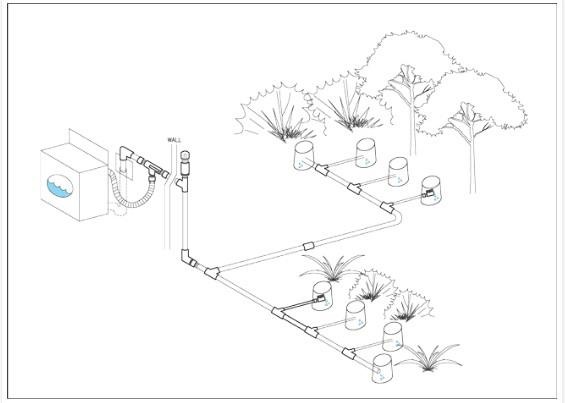By Rainer Hoenicke
One of the public workshop topics by the Master Gardeners of Napa County's teaching garden, the Las Flores Learning Garden, explored the use of greywater for irrigation. The definitions of greywater differ from state to state. In California, water from washing machines/tubs, showers, baths, and bathroom sinks meets that definition. Water from kitchen sinks is not considered greywater in our state, although other states allow its use for irrigation. Any water having contact with feces is considered “blackwater” and needs to go to the sanitary sewer. However, you can flush your toilet with greywater. San Francisco, for example, has an ordinance in place now that requires use of harvested rain or greywater for flushing toilets and urinals in new development projects.
According to the United States Geological Survey, the average Californian uses between 80 and 100 gallons of water every day, as much as 60 percent of which can be used for outdoor irrigation.
Here are a few more fun facts about greywater:
- 13% of CA households use greywater from washing machines for irrigation
- An average household has about 90 gallons per day available for outside use – not counting the kitchen sink
- A homeowner on a quarter of acre of land could irrigate about half a climate-appropriate yard with greywater
- Plants irrigated with greywater in residential areas did fine. With only a slight increase in Boron, no salts accumulate in either the plants or the surrounding soil

Reusing greywater makes ecological sense. Treating water to drinking water standards and distributing it, takes a lot of energy and cost. In California, about 8% of the total energy generated is used for moving, distributing, and treating water. If we reuse greywater, our total water use goes down, and we can contribute to our net-zero carbon emission goal by 2030.
What do you need to know before you irrigate with greywater? First, you need a sub-surface distribution system to irrigate, since soil microorganisms are able to purify many of the impurities in greywater, such as soap residues. You also need to consider your climate and microclimate to determine how much water you need to irrigate. Other things you need to ask yourself are where you want to use greywater, what your lot characteristics are, such as slope, distance from origin to discharge, your soil types and percolation rate, if you want to use greywater in edible or strictly ornamental landscapes, how deep or shallow your groundwater table is, and how far your greywater irrigation system is from any active well. Additional questions you need to find answers to are: What are your city's or Napa County's regulations for greywater systems? Is it cheaper to find water use efficiencies than to install even the simplest re-use system? How cumbersome is a re-use system to maintain?
Source : ucanr.edu